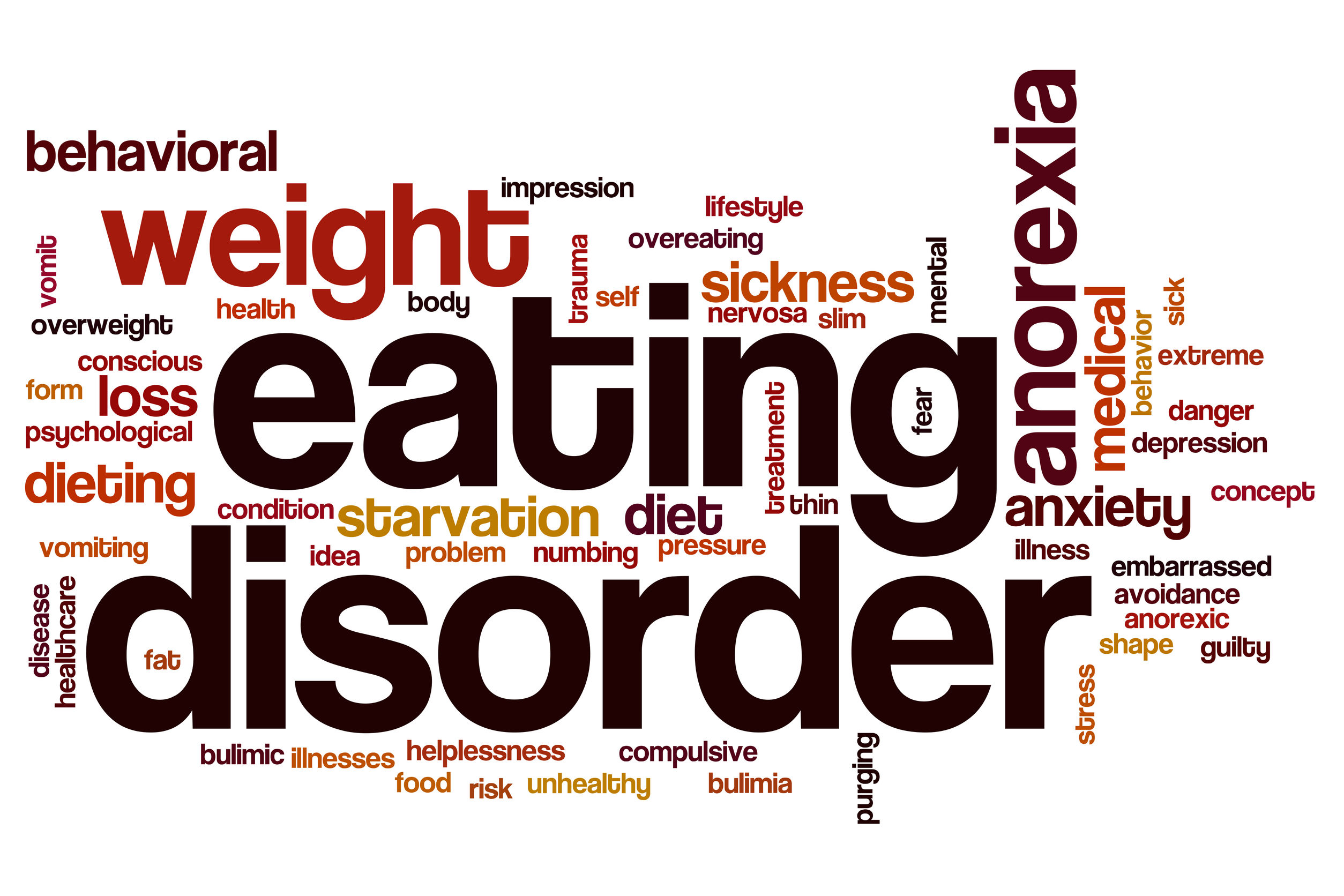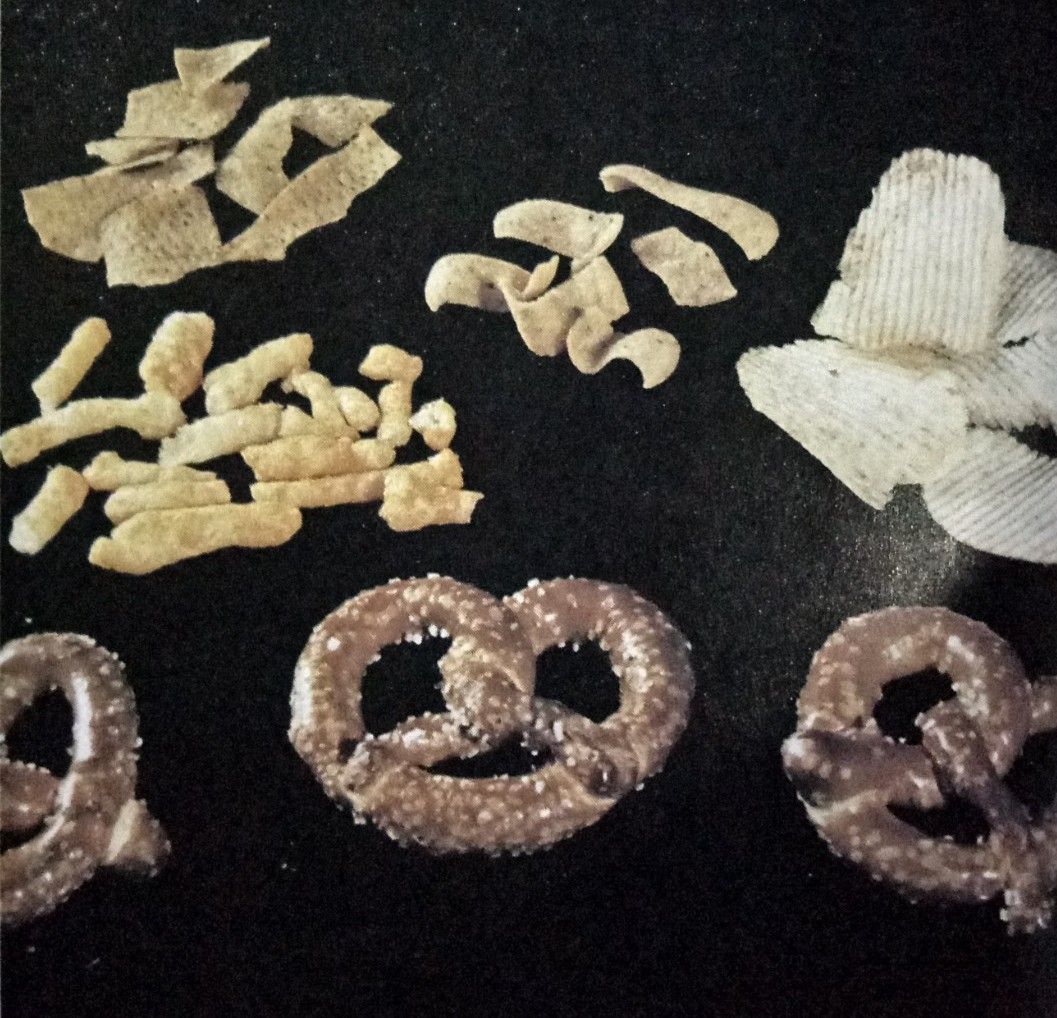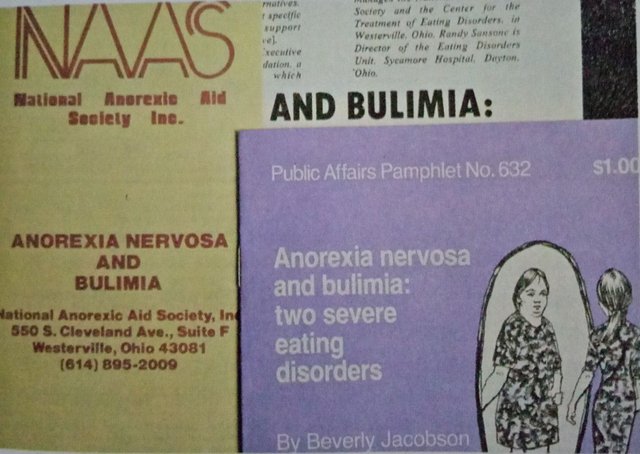What are "ANOREXIA NERVOSA, BULIMIA and BINGE EATING DISORDER?": LET US LEARN MORE ABOUT THEM
You may not know it or not even noticing it, but what if one member of your family, or even your friend, workmate, is suffering from this kind of disorder. That is because they are afraid to show it to anyone or maybe embarrass to let anyone knows about their situation. But as a family member and as a concern citizen, we must also be aware about all of this.
And for us to be able to gain more knowledge about Eating Disorder, I have done some research that I want to share to all of you.

image source
ANOREXIA NERVOSA
Anorexia Nervosa is an emotional disorder in which a poor sel-concept and an intense fear of being overweight result in starvation. About one in 200 adolescent male have anorexia.
The female with anorexia is usually about five to ten pounds overweight at the beginning of puberty. At puberty she is also experiencing breast amd hip development as well as the onset of the menstruation. She has a difficult time accepting her weight and the changes in her body. Her self-concept is affected

Some adolescents wiew their bodies as overweight when they are not.
The person with anorexia begins to diet as a way to cope with feeling and body changes during puberty in order to have rapid weight loss, an extreme diet is adopted and very little food os eaten.
To reduce weight further, diuretics, laxatives and force vomiting are frequently used. A diuretic is a drug that causes the kidneys to release excess urine..
A laxative is a medicine lthat simulates the digestive tract and produces a bowel movents. Persons with anorexia also may exercise too mu ch.
As these behaviors continue, signs of poor physical, mental, and social health begin to show. Sel-concept worsens and this person becomes depressed. The person is likely to withdraw from family and friends. Body organs are affected by this conditions. A family will have a very low percentage of body fat and her breast and hip development stops. She chills easily, has vitamin deficiencies, and misses menstrual periods. Her heart rate might not be regular and her kidneys mabe harmed by the diuretics. If she vomits frequently, there maybe tearing and bleeding in the esophagus.
A person with anorexia needs counseling as well as medical help. A counselor can help this person with his or her self-concept. This person must begin to feel good about himfelf or herself amd his or her body. He or she must learn to accept and appreciate the changes that occur to the body. A physician can help with any damage that has been done to the body. The person with anorexia must eat well-balanced meals and develop effective weight management plan. With proper medical help and diet, the person with anorexia can recover.

Learning to express feelings and accept body changes are important to good health.

BULIMIA
Bulimia is an emotional disorder n which a person has a poor self-concept and an intense fear of being overweight. The result is secret heavy eating followed by starvation, seld-induced vomiting, and the use of laxatives or diuretics.
Bulimia is not a way of dieting. Rather, it is the way of controlling weight. A person with bulimia mah consume thousands of Calories within a very ahort period of time. Ths heavy eating usually is done in private. It often follows some type of stess.Such a person stops eating when he or she feels pai and diccomfort. Then the person wants to get rid of the food. He or she may try to vomit or use laxatives amd diuretics. There maybe abnormal heart rhytm and damage to the kidneys from diuretics. Frequent vomiting causes tearing and bleeding of the gums, stomach, and esophagus,. There is an increase in tooth decay. A person woth bulimia is more susceptible to urinary tract infections. Muscle spasm, dry mouth, and brittle hair may result.

A person with bulimia may consume thousands of Calories in short time.
The heavy eating followed by getting rid of the food occurs often. In between, there may be periods of normal eating. The person usually feels angry for not being able to control this behavior. Drug-related problems and suicide are common in persons with bulimia.
Psychological help focuses in improving self-concept. Lifetime changes in self acceptance are needed. Treatment for bulimia includes psychological help and medical treatment.
Make and follow a plan to maintain your desirable weight.
Maintain a healthful percentage of body fat by exercising regularly.
Feel good about yourself and your body and avoid eating disorders.

Psychological and medical help is needed for treatment of bulimia
ANOREXIA and BULIMIA content and image source from this book.


Binge Eating Disorder
Binge Eating Disorder (BED) is defined by regular episodes of binge eating accompanied by feelings of loss of control, and in many cases, guilt, embarrassment and disgust.
Unlike those with bulimia nervosa, a person with binge eating disorder will not use compensatory behaviours, such as self-induced vomiting or over-exercising after binge eating. Many people with binge eating disorder are overweight or obese, and large population studies indicate that similar numbers of males and females experience binge eating disorder.
Frequent episodes of binge eating involving the consumption of a large amount of food in a short period of time. Binge episodes will be accompanied by a loss of control over eating and the inability to stop the binge
A range of identifiable eating habits, including eating very quickly, eating without being hungry and continuing to eat to discomfort when already full
Feelings of guilt and shame about the amount of food consumed during a binge episode and the way it has been eaten. Binge eating often occurs at times of stress, anger, boredom or distress, and at these times may be a means of coping with challenging emotions
Secretive behaviours around food. Because of their feelings around food, people with binge eating disorder are often very secretive about their eating habits and choose to eat alone
Physical signs
Feeling tired and not sleeping well
Feeling bloated, constipated or developing intolerances to food
Psychological signs
Preoccupation with eating, food, body shape and weight
Increased sensitivity to comments relating to food, weight, body shape, exercise
Extreme body dissatisfaction, low self-esteem and shame about their appearance
Feelings of extreme distress, sadness, irritability, anxiety and guilt during and after a binge episode
Behavioural signs
Evidence of binge eating (e.g. disappearance or hoarding of food)
Secretive behaviour relating to food (e.g. hiding food and food wrappers; evading questions about eating and weight
Increased isolation and withdrawal from activities previously enjoyed
Erratic behaviour (e.g. shoplifting food or spending large amounts of money on food)
Self-harm, substance abuse or suicide attempts
What are the risks associated with binge eating disorder?
The risks associated with binge eating disorder are severe. People with binge eating disorder may experience:
Osteoarthritis - a painful form of degenerative arthritis in which a person’s joints degrade in quality and can lead to loss of cartilage
Chronic kidney problems or kidney failure
High blood pressure and/or high cholesterol leading to increased risk of stroke, diabetes and heart disease
Treatment
Evidence-based therapies to consider for the treatment of binge eating disorder include:
Cognitive behavioural therapy for binge eating disorder
Interpersonal psychotherapy
Dialectical behaviour therapy
Lisdexamfetamine dimesylate (LDX), a central nervous system stimulant medication
Note: If the person with the eating disorder also presents with symptoms of obesity, this will need to be managed simultaneously using the appropriate treatment.
Find out more about specific treatment approaches.
Getting help
If you suspect that you or someone you know has binge eating disorder, it is important to seek help immediately. Contact your GP for a referral to a practitioner with specialised knowledge in health, nutrition and eating disorders.
Find someone to talk to: It is important to have support, whether it is through a Doctor, your partner, family, a friend, binge eating support groups or online.
imagesource
BINGE DISORDER source here
STATISTIC of EATING DISORDER in THE PHILIPPINES

imagesource
Thank you so much for giving some time reading my blog.
Thank you and God bless
As I always say...
